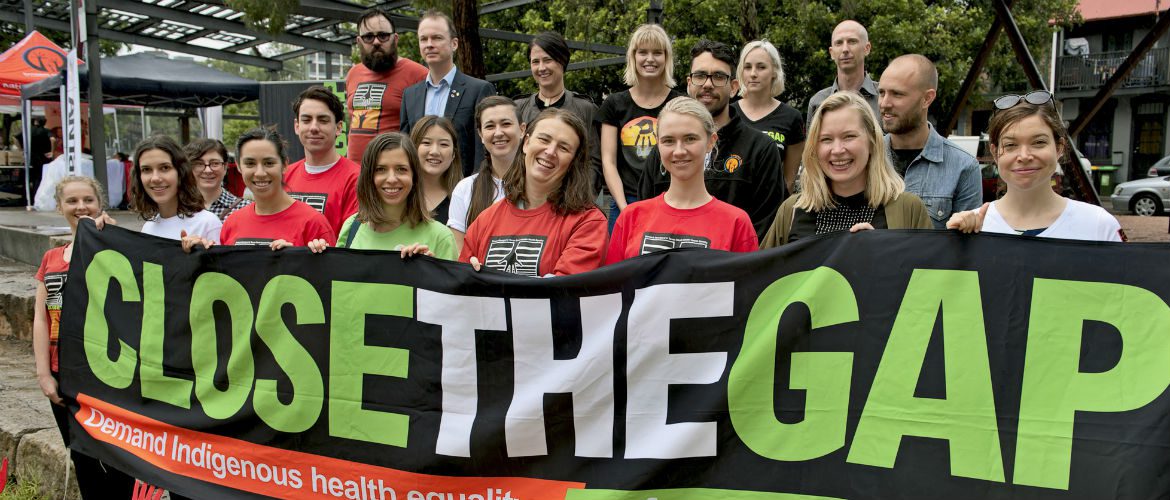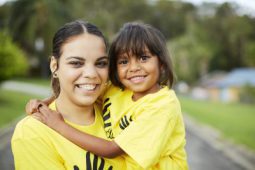
Belonging to one of the world’s longest surviving cultures is no mean feat, but surviving is not the same as thriving. Aboriginal and Torres Strait Islander communities are faced with disproportionate rates of preventable disease, injury and mental health challenges.
These 10 facts demonstrate, alarmingly, just how big the health gap between Indigenous and non-Indigenous Australians is.
Fact #1 – 50,000…
The minimum number of years that Aboriginal and Torres Strait Islander Peoples have been living on the land now known as Australia, making Australian Aboriginal and Torres Strait Islander culture one of the world’s oldest surviving cultures.1

Fact #2 – 30%…
The percentage of adults in Indigenous communities living with Type 2 diabetes (that’s more than three times higher than non-Indigenous communities).2

Fact #3 – 64 times more likely…
Indigenous people are 64 times more likely than non-Indigenous people to have rheumatic heart disease3, and eight times more likely to be hospitalized because of it.4
In fact it’s been said that when it comes to rheumatic heart disease, it’s unlikely that such a stark contrast between two populations living within the same national barriers exists for any other disease on any other continent in the world.5

Fact #4 – 95%…
The percentage of Aboriginal and Torres Strait Islander Peoples in Australia affected by a suicide.6

Fact #5 – 1:5,360…
The ratio of Indigenous doctors to Aboriginal and Torres Strait Islander Peoples (compared to 1:372 for non-Indigenous Australians).7

Fact #6 – 60%…
The percentage by which Indigenous people are more likely than non-Indigneous people to die from cancer.8

Fact #7 – 3 times…
Aboriginal and Torres Strait Islander Peoples are three times more likely than non-Indigenous adults to experience high or very high levels of psychological distress.9

But despite all this, there is hope…
Fact #8 – 90%…
The percentage of Aboriginal and Torres Strait Islander people surveyed who said they felt happy some, most, or all of the time.10

Fact #9 – 83%…
The percentage by which the gap in infant mortality rates between Indigenous and non-Indigenous babies has narrowed since the period 1998-2012.11

So what now? The gap is closing, but way too slowly. Health equality is everybody’s business. Luckily, most Australians agree.
Fact #10 – 70%…
The percentage of people who think improving Aboriginal and Torres Strait Islander community living conditions should be a high or very high priority for the Australian Government.12

That’s over 16 million people. Imagine if 16 million people registered an event for National Close the Gap Day. We’d beat the 2016 record ten thousand times over, and send a loud, clear message to politicians: health equality is everybody’s business: it’s time to Close the Gap!
It’s not too late to register for National Close the Gap Day – Thursday 16 March. Demand Indigenous health equality now.

Demand Indigenous health equality
Equal access to healthcare is a basic human right, and in Australia, we expect it. On Thursday 16 March, join us for National Close the Gap Day, to demand health equality for all Australians.
1. DNA confirms Aboriginal culture one of Earth’s oldest, National Geographic 23/9/2011↩
2. Diabetes crisis is forum target, Koori Mail 473 p.14↩
3. Australian Institute of Health and Welfare. Rheumatic heart disease and acute rheumatic fever in Australia: 1996 – 2012, Cardiovascular Disease Series. Cat. no. CVD 60. Canberra: AIHW, 2013.↩
4. RHDAustralia. Health Worker Modules: Module 1 – Acute Rheumatic Fever and Rheumatic Heart Disease 2012. Darwin Rheumatic Heart Disease Australia 2012.↩
5. Indigenous Suicide – White Comfort Politics and Survivorship’, The Stringer 15/1/2016↩
6. Brown A, McDonald M, Calma T. Acute rheumatic fever and social justice, Medical Journal of Australia. 2007;186(11):pp. 557-8.↩
7. A column by our own doctors, Koori Mail 438 p.54↩
8. Study looks at cancer death rates, Koori Mail 474 p.32↩
9.Australian Bureau of Statistics (2013) Australian Aboriginal and Torres Strait Islander health survey: first results, Australia, 2012-13: Table 7, Canberra: Australian Bureau of Statistics.↩
10. Steering Committee for the Review of Government Service Provision (2014) Overcoming Indigenous disadvantage: key indicators 2014. Canberra: Productivity Commission↩
11.Australian Health Ministers’ Advisory Council, Aboriginal and Torres Strait Islander Health Performance Framework 2014 Report, AHMAC, Canberra, 2015, p. 64↩
12. Opinion poll scathing of Government, Koori Mail 459 p.3↩